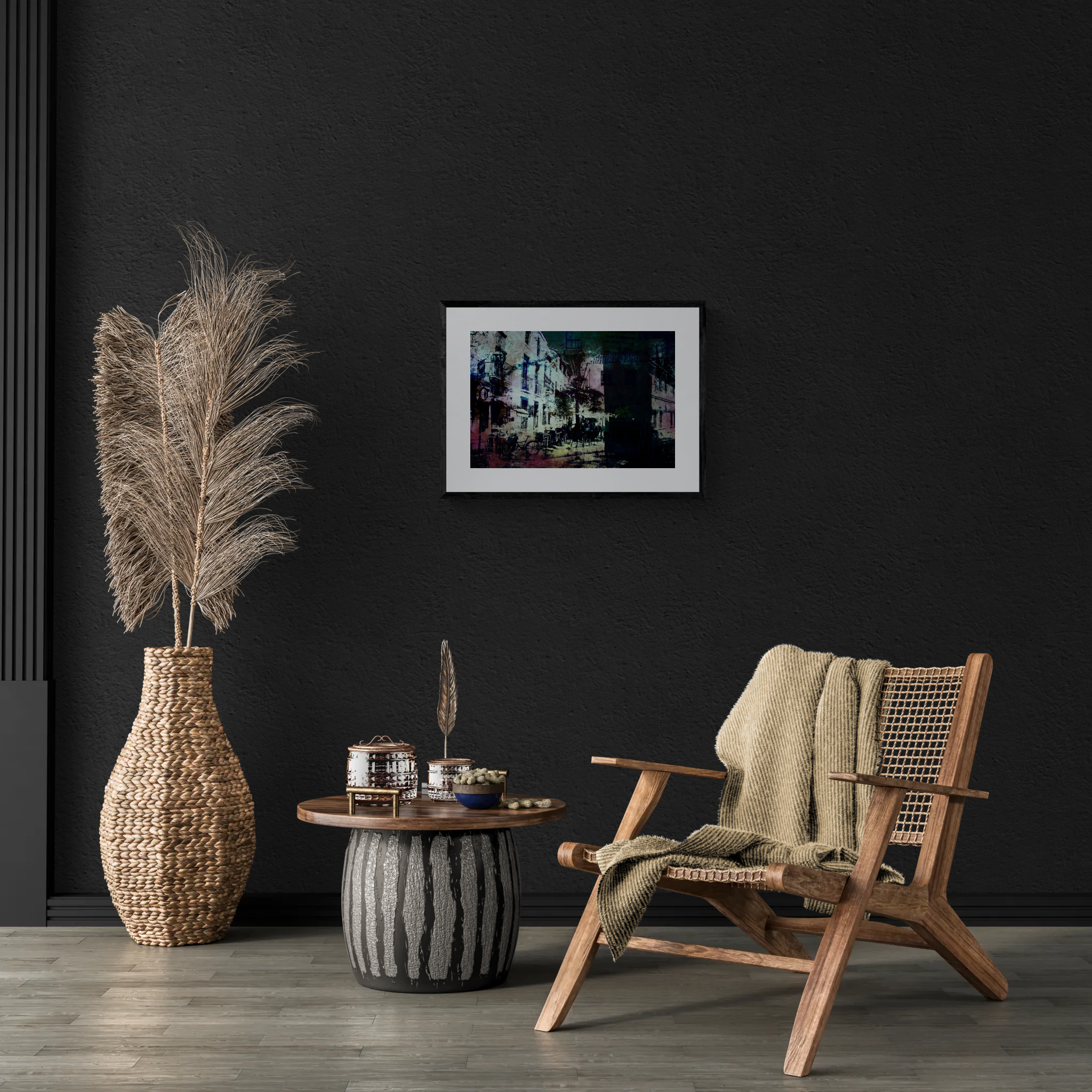
Coldoba
Click Image to Go Back
This image treats Córdoba as a compact knot of streets and structures. Facades stack tightly across the surface, their windows, balconies, and ironwork reduced to sharp black marks that cut through fields of green, rust, and violet. The architecture does not open into depth; instead it presses forward, creating a sense of compression and limited air.
Electric cables, railings, and tree forms weave through the middle zone, blurring the distinction between built structure and urban vegetation. Large dark blocks occupy the right side, functioning less as buildings than as areas where information has dropped out, echoing the blind corners and unlit alleys of an old city.
Color shifts from warm reds at the bottom to colder greens and blues above, suggesting night gathering over stone. Rather than depicting a specific street, the work concentrates on the memory of walking through dense, shadowed passages where orientation depends on fragments of light and edge.


